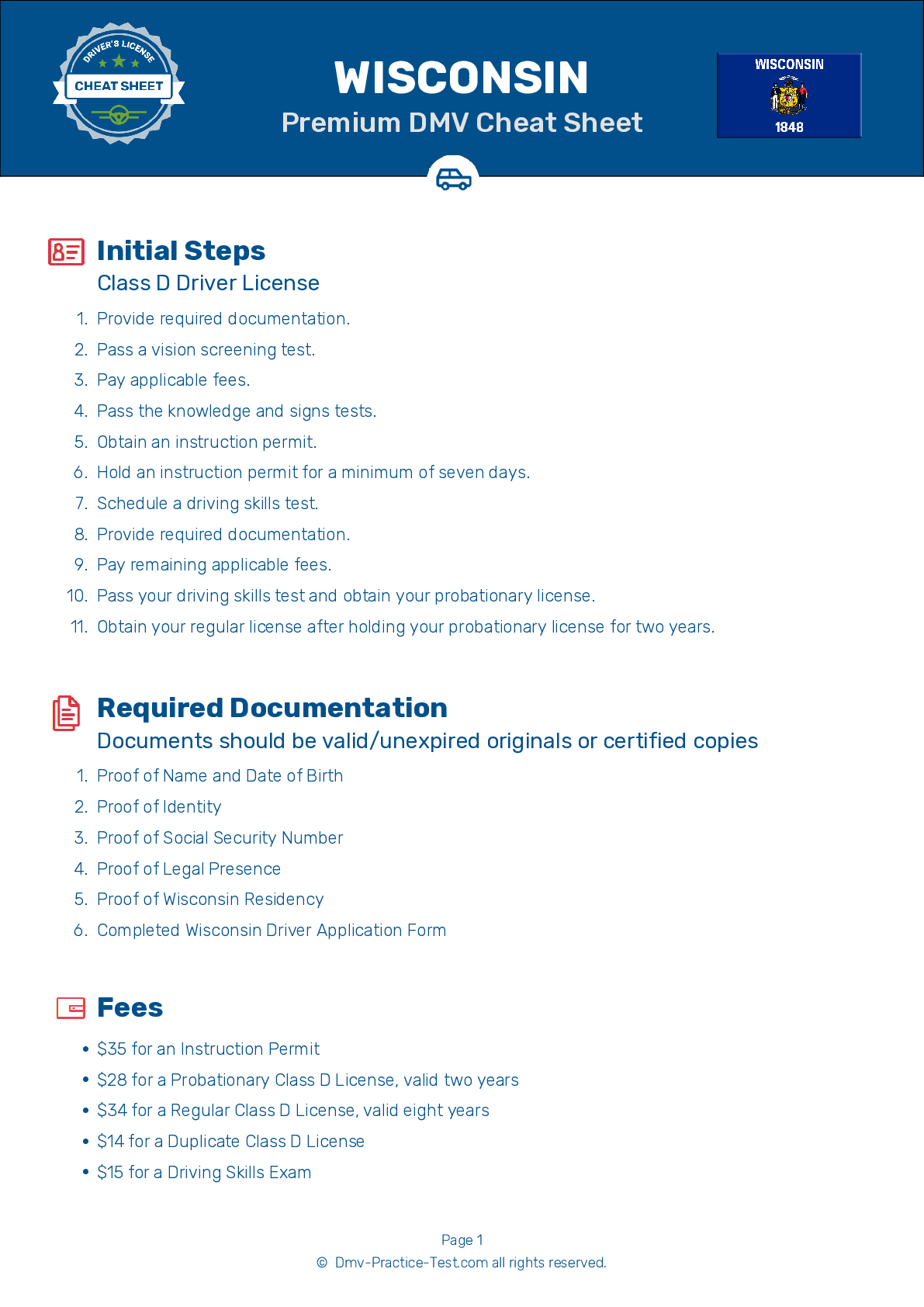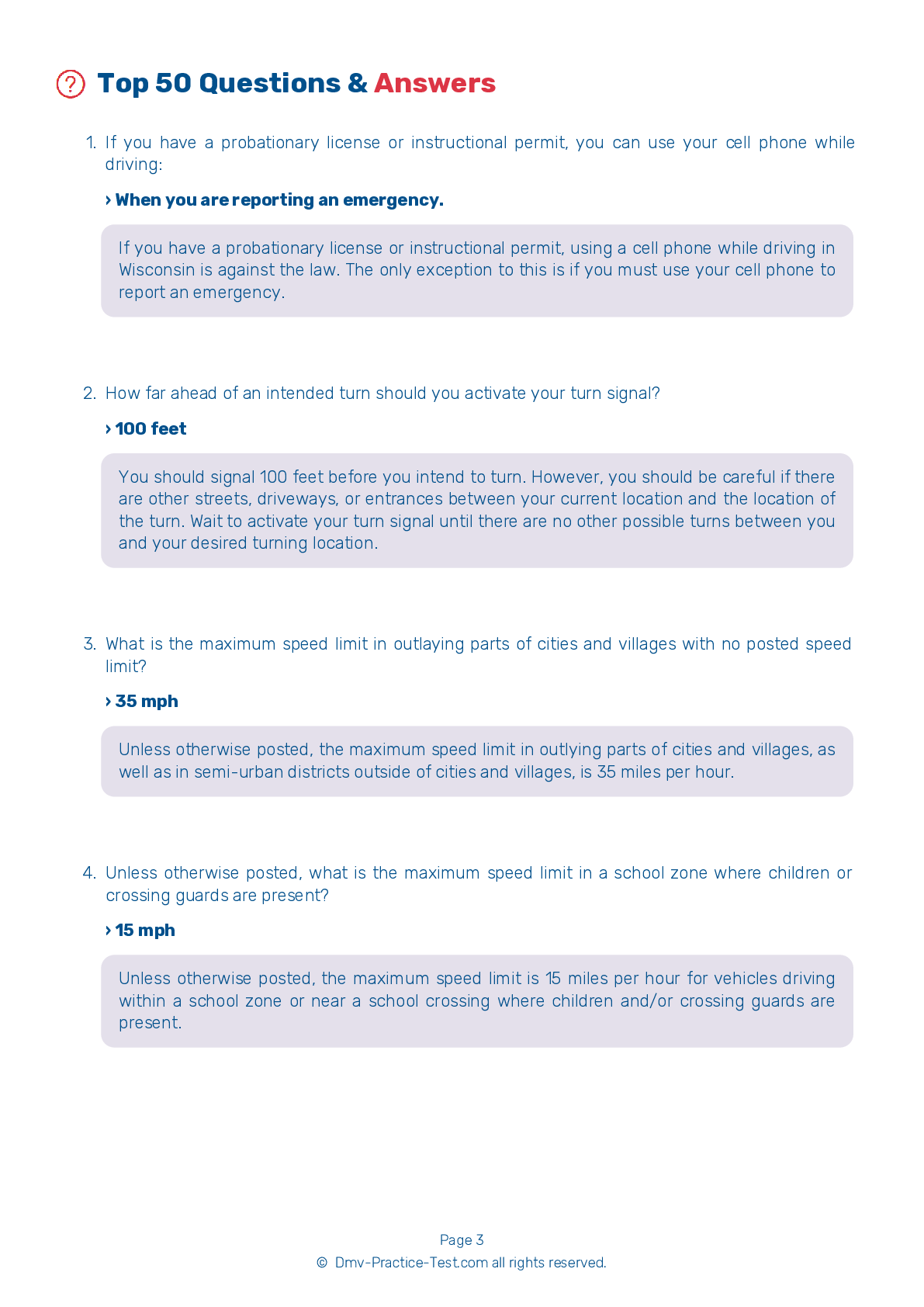FREE Wisconsin DMV Practice Test #18 Page 4 of 7
The Wisconsin DMV practise examinations have been updated for January 2025. It includes questions based on the Wisconsin Driver Handbook's most significant traffic signals and legislation for 2025. Use actual questions that are very similar (often identical!) to the DMV driving permit test and driver's licence exam to study for the DMV driving permit test and driver's licence exam.
On the practise exam, each question gets a tip and explanation to help you remember the concepts. The written component of the official Wisconsin DMV test will include questions about traffic rules, traffic signs, and driving statutes, as well as knowledge from the Driver Handbook.
To obtain a passing grade, you must correctly answer 40 of the 50 questions. Use the practise exam provided by the Wisconsin Department of Motor Vehicles to help you prepare for your instruction permit or driver's licence.
The DMV exam is available in several languages.
Using any kind of testing assistance will result in an automatic fail, and the DMV may take additional action against your driver's licence, so stay away from it.
22 . This sign means:

This sign is placed at the beginning of one-way streets and ramps to indicate that you must not continue driving in your current direction.
23 . Fatigue increases the risk of:
Fatigue causes errors related to speed and distance, increases your risk of being in a crash, and causes you to take more time to make decisions. When you are fatigued, you could fall asleep behind the wheel and crash, injuring or killing yourself or others.
24 . When faced with an oncoming car to the left and a bicyclist to the right, you should:
When there is more than one potential hazard on the road, you should ensure that you only have to deal with one of them at a time. For example, when there is a bicyclist on the right that you want to pass and an oncoming car to the left, you should not try to squeeze between both at the same time. Instead, let the oncoming car pass, and then pass the bicyclist.
25 . A single broken yellow line down the center of a two-lane road indicates:
Yellow lines are used to separate traffic moving in opposite directions. Dashed lines indicate that drivers directly next to the line are permitted to pass when it is safe to do so.
26 . A double solid yellow line down the center of a two-lane road indicates:
Yellow lines are used to separate traffic moving in opposite directions. Solid lines indicate that drivers are not permitted to pass.
27 . To see vehicles in your blind spots, you should check:
By definition, blind spots are areas that cannot be seen using your mirrors. To check your blind spots, you should look over your shoulders.
28 . If you are stopped by a police officer, you should:
If you are stopped by the police, keep your hands on the wheel and ask any passengers to keep their hands in view as well. You should remain in the vehicle unless the police officer asks you to get out. Wait until the officer asks you to retrieve your driver license, registration, and insurance cards.
Need Car Insurance? No problem!
Compare the best rates in Wisconsin and find a personalized policy that meets your needs.
1. Are You Currently insured ?
2. Married ?
3. Do you own your Home?
4. Do you have more than 1 car ?
5. Have you or a Family Member Honorably Served in U.S. Military ?
6. Your Name
7. Age
8. Zip code
IMPORTANT REMINDER:Auto Insurance is Mandatory to drive in Wisconsin. Get covered before you hit the road to avoid any fines.
Ranked by best match



